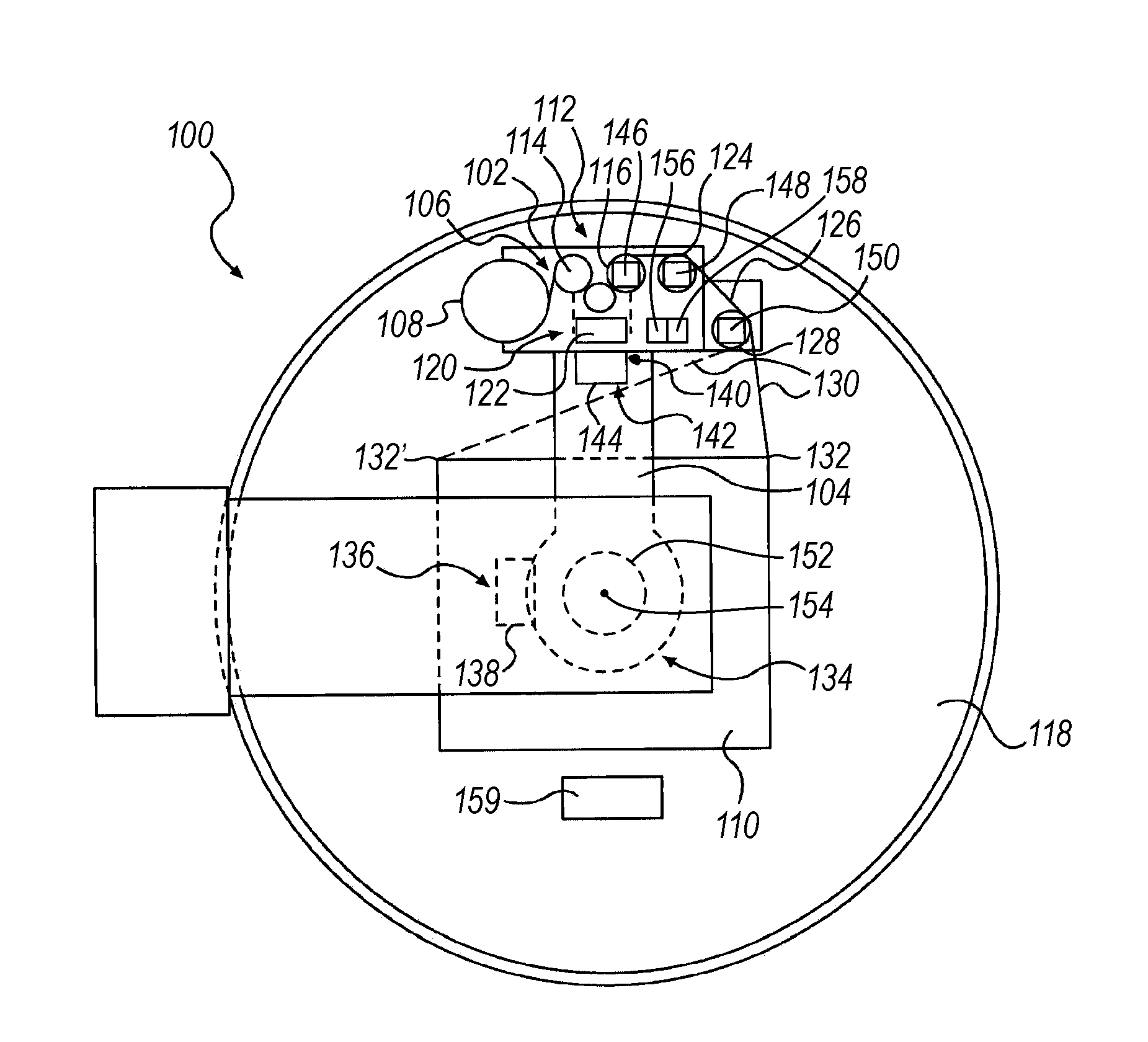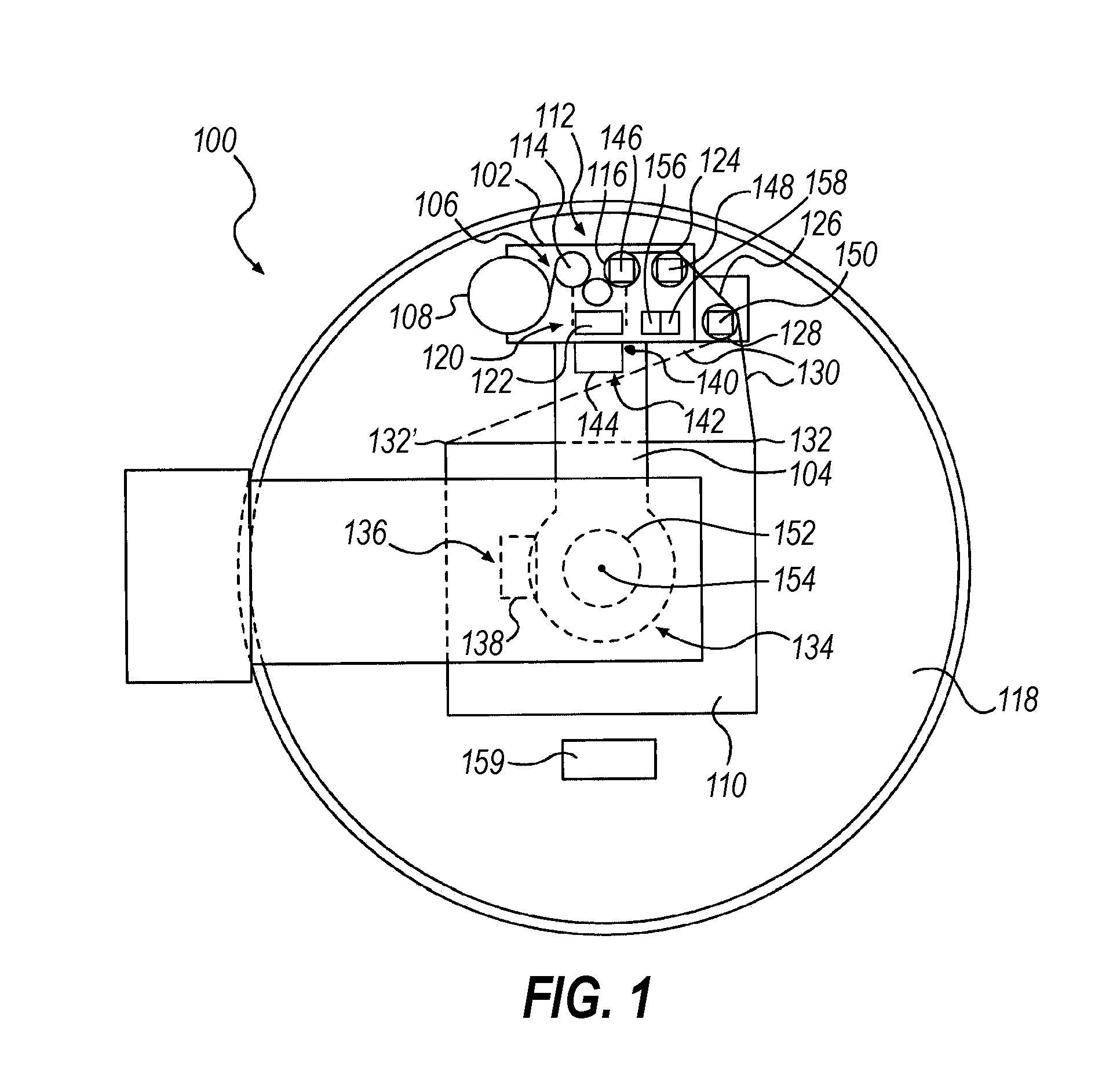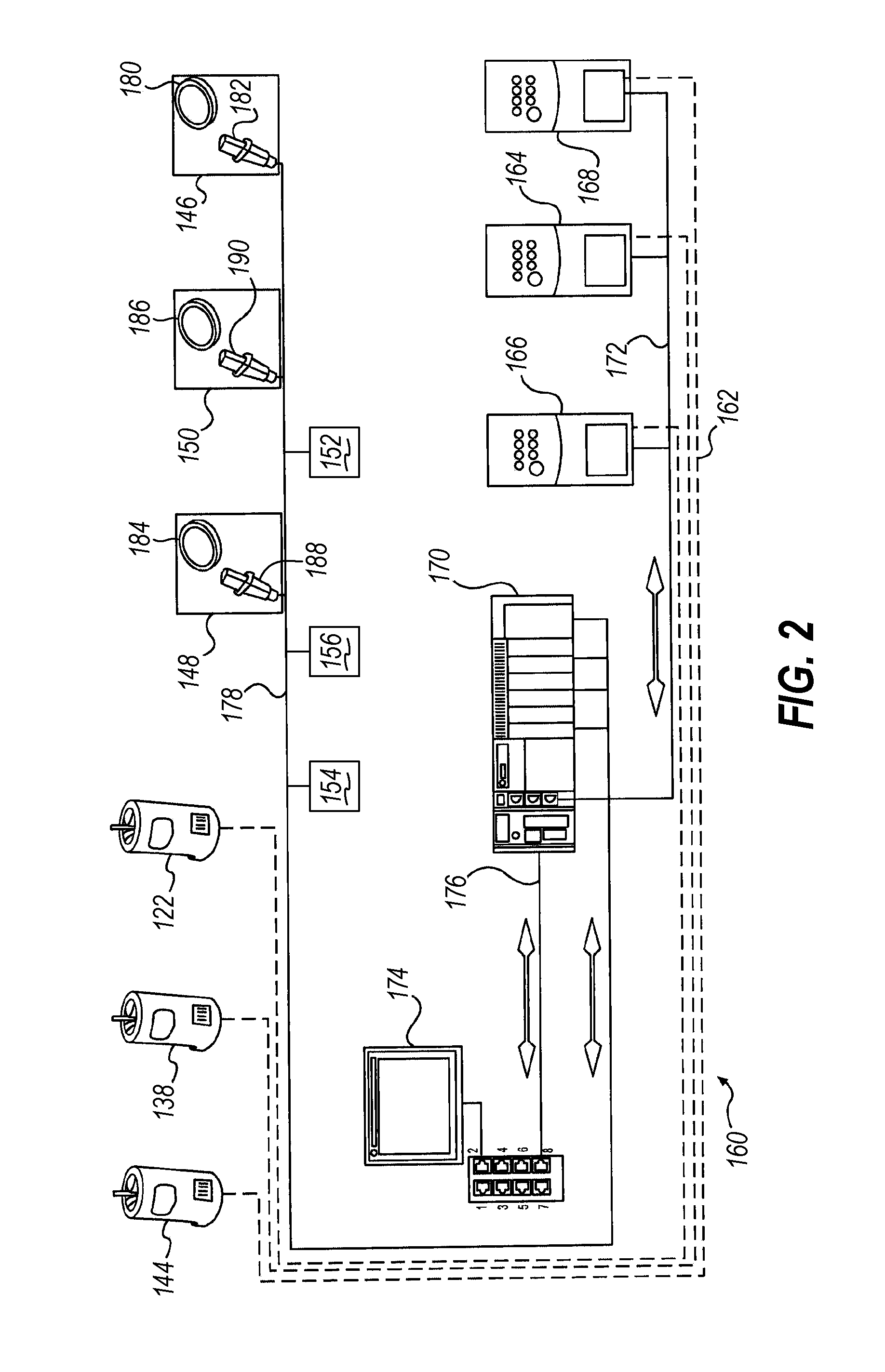Effective circumference-based wrapping
- Summary
- Abstract
- Description
- Claims
- Application Information
AI Technical Summary
Benefits of technology
Problems solved by technology
Method used
Image
Examples
Embodiment Construction
[0050]Embodiments consistent with the invention utilize in one aspect the effective circumference of a load to dynamically control the rate at which packaging material is dispensed to a load when wrapping the load with packaging material during relative rotation established between the load and a packaging material dispenser. Prior to a discussion of the aforementioned concepts, however, a brief discussion of various types of wrapping apparatus within which the various techniques disclosed herein may be implemented is provided.
[0051]In addition, the disclosures of each of U.S. Pat. No. 4,418,510, entitled “STRETCH WRAPPING APPARATUS AND PROCESS,” and filed Apr. 17, 1981; U.S. Pat. No. 4,953,336, entitled “HIGH TENSILE WRAPPING APPARATUS,” and filed Aug. 17, 1989; U.S. Pat. No. 4,503,658, entitled “FEEDBACK CONTROLLED STRETCH WRAPPING APPARATUS AND PROCESS,” and filed Mar. 28, 1983; U.S. Pat. No. 4,676,048, entitled “SUPPLY CONTROL ROTATING STRETCH WRAPPING APPARATUS AND PROCESS,” an...
PUM
| Property | Measurement | Unit |
|---|---|---|
| Length | aaaaa | aaaaa |
| Force | aaaaa | aaaaa |
| Angle | aaaaa | aaaaa |
Abstract
Description
Claims
Application Information
 Login to View More
Login to View More - R&D
- Intellectual Property
- Life Sciences
- Materials
- Tech Scout
- Unparalleled Data Quality
- Higher Quality Content
- 60% Fewer Hallucinations
Browse by: Latest US Patents, China's latest patents, Technical Efficacy Thesaurus, Application Domain, Technology Topic, Popular Technical Reports.
© 2025 PatSnap. All rights reserved.Legal|Privacy policy|Modern Slavery Act Transparency Statement|Sitemap|About US| Contact US: help@patsnap.com



